Why Summer Is the Best Time to Visit Lima
Why Summer Is the Best Time to Visit Lima
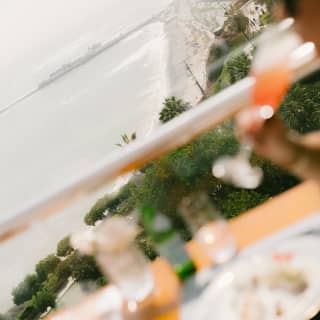
In the summer, the mysterious sea mist lifts and limeños come alive. Lima, the foodie capital of South America, is vibrant and cosmopolitan year-round – but her best side is seen between December and April. Fresh from a whirlwind nationwide tour celebrating Belmond’s 25 years in Peru, writer Alexandra Pereira shares her Lima highlights.
Often the starting point for historical treks, sacred pilgrimage and Amazonian epiphanies, Lima’s many delights are sometimes overlooked, lost in the wintry mist. But in the summer months – December to April – it offers sunny highs and bluer skies.
You might not expect it, but Lima is, in fact, a desert city; the inland winds and brisk water streams of the Pacific create an unusual microclimate. At its sea-level proximity, the autumn and winter months deliver stormy, windy, grey days. Visit at the end of spring and into summer, the skies crack, a gentler climate descends and the sunsets are a true spectacle, casting orange watercolour hues over the Pacific Ocean. Discover why Lima is more than just a stopover before further Peruvian adventures.
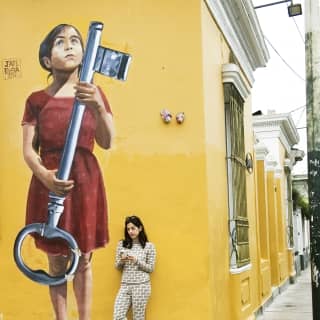
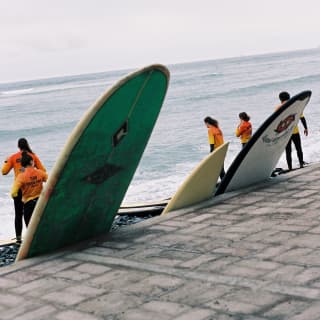
WHAT TO DO
How better to embrace Lima’s welcoming summertime climate than to dive into the city’s best outdoor pursuits? A host of surf schools lead classes from 6am under the orange sunrise in Miraflores and further south towards the neighbourhood of Reducto. The city is also well developed for cyclists, especially around Miraflores and Barranco, where the roads are a little less hectic. You can take 3-hour bike tours with local guides, and even coastal tours on mountain bikes if your thighs are aching for more.
Miraflores and Barranco tours on foot serve as a particularly efficient way to spot street art, from graffiti to murals. Miraflores is home to darling spots such as the Parc Guëll-inspired Love Park, where large sculpture ’The Kiss’ depicts a man and wife in an enduring embrace, in reference to rumours of a ’longest kiss’ contest that used to take place here.
Should the sun be pelting down a little hard – or one of Lima’s infamous overcast afternoons sets in – shelter in the city’s museums. Peruse the evocative displays at Museo Larco, with current collections dedicated to pre-Columbian societies, erotic art and ancient pottery artefacts. Over at the National Afro-Peruvian Museum you can explore the difficult history of colonial forces and slave trade in the region. Similarly, the Place of Memory, Tolerance and Social Inclusion, or LUM, offers a sobering look at Lima’s history. It’s customary to gaze out onto the Pacific Ocean at the end of your visit, from the museum’s Balcony of Anguish on the third floor.
Then there’s Lima’s slightly more gothic allure: located beneath the 16th-century Monasterio de San Francisco, a subterranean pathway network snaking its way through what was once the capital’s only cemetery. Around 25,000 crypts make up the Lima catacombs, said to be the most substantial on the continent. In all its gleaming glass cube glory, Lima’s Museum of Contemporary Art houses a modest yet robust permanent collection of contemporary work from across the globe; small gallery studio spaces like Polen are also excellent places to shop for artisanal crafts and ceramics.
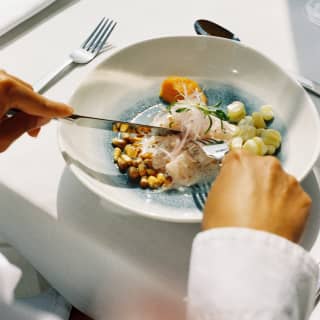
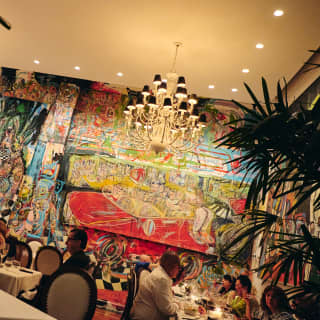
WHERE TO EAT & DRINK
A strong Chinese-Peruvian tusán community in Lima means plenty of Szechuan and Sichuan restaurants, while the South American-Asian fusion of cuisines known as chifa offers plenty of Cantonese influences merging with Peruvian ones. Try wandering the sunlit, brightly decorated streets of Barrio Chino, Lima’s own Chinatown, for wontons, soups and roasted meats – or Madame Tusan in Miraflores.
Scattered throughout the city, too, is a well-established Japanese-Peruvian nikkei community, meaning another exciting culinary pairing: prepare to be blown away by ceviche sashimi and other fresh oceanic delights with fire-hot jalapenos and mouthwatering citrus combinations. Booking a table at Maido is a must. If you’re willing to stand in line for one of the buzziest spots in town, Isolinaoffers up some of the best local staples in unfussy, contemporary surroundings. This beloved tavern serves up Peruvian classics like causa, chicharrón and patita con maní.
No trip to Peru is complete without drinks at Belo Bar in Belmond’s Miraflores Park, followed by dinner at Tragaluz. Both lead with artful surroundings and menus brimming with poetry; opt for a pisco espresso martini before feasting on creations from chef Ricardo Ehni like nikkei tiradito and the chifa classic of lomo saltado – a marinated beef stir-fry. From Tragaluz’s high ceilings hang dimly lit futuristic chandeliers, while walls echo Barranco’s lively wall murals, adorned with colourful, avant garde work from the likes of Mateo Liébana. And if the summer night beckons, head to bars Victoria and Olé for endless piscos and dancing.
MIRAFLORES PARK, A BELMOND HOTEL
Step into our urban oasis and feel a sense of serenity descend. Here, Lima’s contemporary spirit and vibrant social scene is paired with the pinnacle of Limeño luxury.
Ascend to our rooftop for spectacular views of the Pacific Ocean to frame your morning coffee and for sunset cocktails on Wednesdays as the sky becomes a divine kaleidoscope of colours. Or dine divinely at Tragaluz, our iconic restaurant where culinary theater is a way of life.
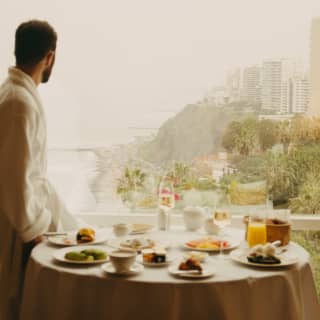
Delve deeper into
You might also enjoy
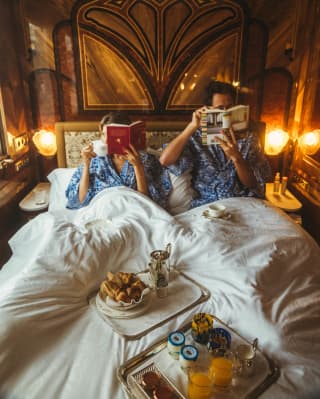
Privacy in Motion
Travelling in luxury by train or boat recalls a sense of cinematic glamour. Now, takeovers and charters are the new way to recreate a rollicking spirit of celebration for special occasions.
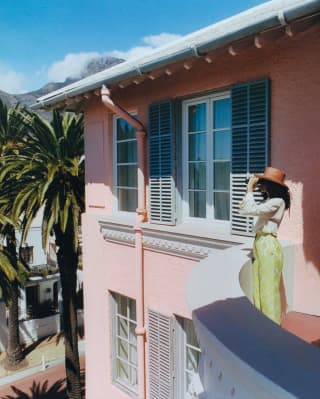
Belmond Legends: Mount Nelson
The one trailblazer of Cape Town and the icon behind the ‘Mount Nelson Pink’ carnation, our mythical hotel has set the standard for luxury for more than a century – discover the Belmond legend.
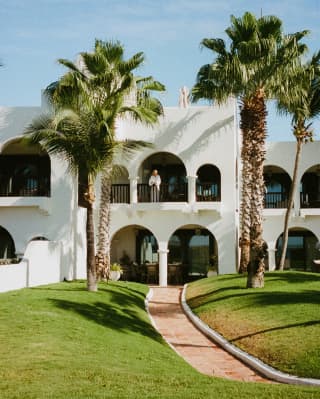
Belmond’s Best Beach Villas
“I shall wear white flannel trousers and walk upon the beach,” T.S. Eliot wrote in a wistful ode to life by the sea. Surely the best way to appreciate it is from the comfort of your own villa – ideally with a cocktail in hand.
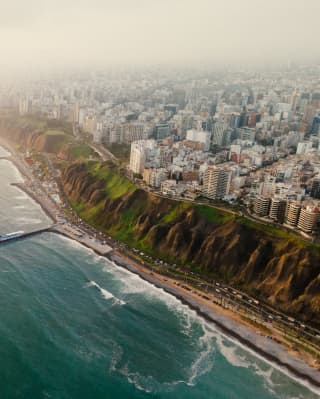
Where to Set-Jet in 2025
More than ever, travellers are picking travel spots featured on their favourite TV shows and films. We investigate the trend and look ahead to the stop set-jetting spots for 2025, from deep valleys of Caledonia to the plains of Peru.
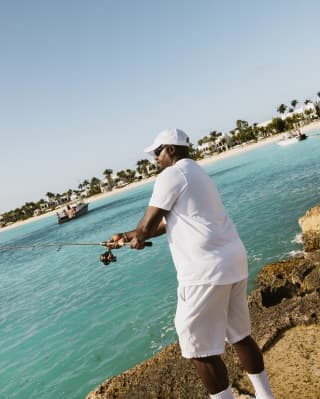
Insider’s Guide to Anguilla
With palm-fringed beaches, luxurious hotels and an impressive array of restaurants, the Caribbean island of Anguilla is a sun-seekers dream realised. Travel writer and ‘Carivangelist’ Sarah Graves-Gabbadon gives you the low-down on the perfect high-end getaway.
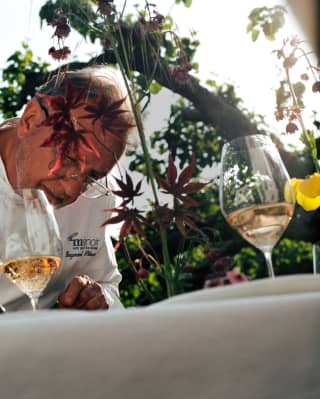
Belmond Legends: Le Manoir Aux Quat’Saisons
A place for gastronomic greatness, Le Manoir has gathered the culinary curious for the past 40 years. Join us to learn more about our iconic hotel and restaurant’s garden-to-table philosophy.
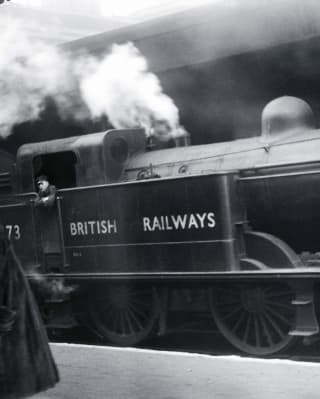
Just the Ticket
Ever since a young Cornish engineer pioneered the first-ever train journey in South Wales in 1804, the world has been enamoured with the possibilities of the rail travel. Journalist, trains aficionado and author of 'Around the World in 80 Trains', Monisha Rajesh, leads us full steam ahead through Britain’s railway history – and explores how a new luxury train signals that slow travel is back on track.